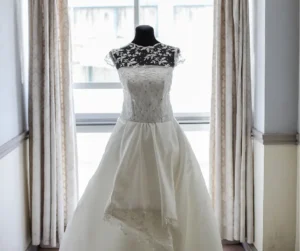Sarees are more than just garments; they embody tradition, culture, and personal style. Whether it’s a luxurious Kanjivaram silk or a breezy cotton, each saree in your wardrobe deserves special care to preserve its beauty and elegance. At FCL, we emphasize the importance of knowing how often to dry clean your sarees to ensure their longevity.
Understanding Fabric Types and Their Care Needs

The frequency of dry cleaning largely depends on the fabric of your saree. For instance, silk sarees are delicate and susceptible to damage from stains and moisture. We recommend silk sarees dry cleaning after every 1-2 wears, especially if they’ve been worn for special occasions. This not only maintains their luster but also prevents dirt and sweat from embedding into the fabric.
On the other hand, sarees made from cotton, linen, or other durable materials can typically be dry cleaned less frequently. These sarees, often worn casually, can endure more wear before needing professional cleaning. For these fabrics, a dry cleaning schedule of every 4-6 wears is usually sufficient. However, it’s crucial to address any stains immediately to avoid long-term damage.
The Importance of Pre-Storage Cleaning
Before storing your sarees for an extended period—such as at the end of a wedding season or during seasonal changes—dry cleaning is essential. This step ensures that any dirt, oils, or stains are removed, preventing discoloration or deterioration of the fabric over time. Properly cleaned and stored sarees are less likely to develop mold, mildew, or odors, keeping them fresh for your next occasion.
Addressing Stains Immediately
Stains can be detrimental to the life of any saree. If a saree gets stained—particularly by oil, food, or sweat—it’s best to send it for dry cleaning as soon as possible. The longer a stain remains, the harder it becomes to remove, and it can even lead to permanent damage. Immediate attention from FCL’s professional cleaning team helps lift stains effectively while maintaining the integrity of the fabric.
Periodic Dry Cleaning for Long-Term Storage
For sarees that are stored away for long periods, we recommend periodic dry cleaning even if they haven’t been worn. Over time, stored sarees can accumulate dust, absorb moisture, or develop unpleasant odors, all of which can affect the fabric’s quality. By dry cleaning these sarees every 1-2 years, you can ensure they stay fresh and ready to wear. This practice also allows for early identification of issues like moth damage or color fading, enabling timely intervention.
Conclusion
The frequency of dry cleaning your sarees is crucial for their upkeep. By tailoring your cleaning schedule to the fabric type, how often you wear the saree, and how it’s stored, you can ensure that your sarees remain as beautiful and vibrant as the day you first wore them. Whether it’s a cherished heirloom or a contemporary piece, proper care and regular dry cleaning from FCL Laundry and Dry Cleaning will help you enjoy your sarees for years to come, transforming them into timeless treasures in your wardrobe. Trust us for all your saree care needs in Coimbatore, and experience the difference with our expert services!





